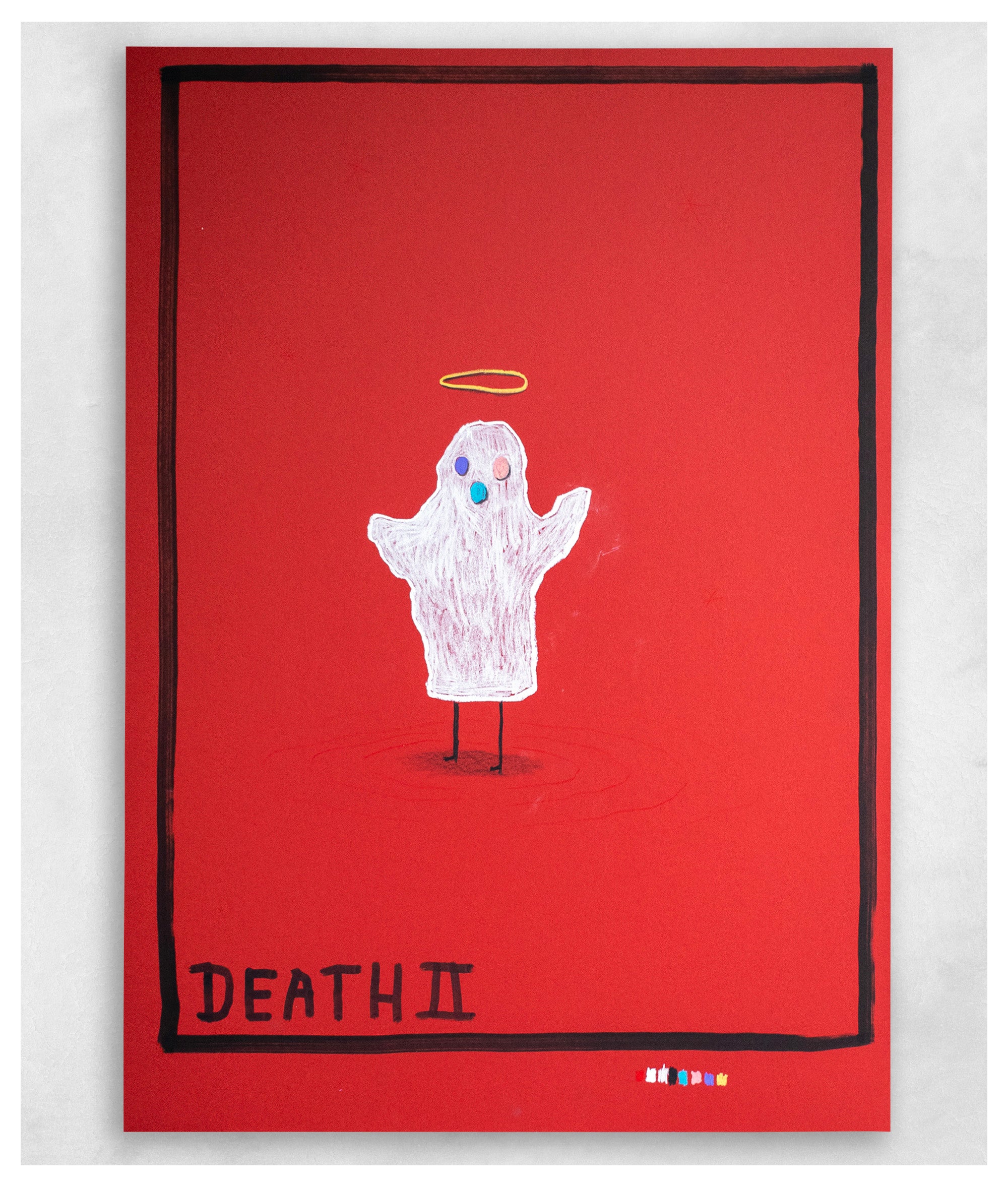title: Multiple Lost
Size: 98×210 mm (38.58" ×82.68")
technique: mokuhanga tracona – Japanese woodblock (reductive japanise woodblock printing), kara-zuri (空摺)
print from the print run (limited edition): 5/5
year: 2021
paper: Hahnemühle FineArt Hemp 290 g/m²
<
Hand-printed graphics made using the lost technique, mokuhanga — Japanese woodcut.
The "lost" technique (in. reduction) consists in gradual subtraction of printing planes after each reflection of the assumed buy number of works. This means that after completing the printing process, the matrix is completely destroyed and it is not possible to print further works from this series. In this particular work, the printout includes 5 prints and the presented work is the last print in the series.
I was inspired to create this work by the depictions of Namau (鯰) – one of the mythical creatures of the Japanese Yōkai (妖怪). It is a personification of earthquakes, or more precisely an attempt to explain their origin. Namazu is a huge catfish that lives in silt underground and is guarded by the god Kashima (holds Namazu with a large stone). Every now and then Kashima loses his vigilance and then Namazu begins to throw furiously, which on the surface of the earth manifests itself in earthquakes. Namazu was a common motif in Japanese art. There were many woodcuts called namazu-e, made according to the canon of ukiyo-e art (浮世絵).
I have been dealing with Japanese woodcuts for several years m.in as part of my doctorate which I am doing at the Institute of Fine Arts of the University of Rzeszów. Many tools and materials that I use to create graphics I do myself.
_____
<
Hand-printed graphics made with the lost technique, mokuhanga – japanise woodblock printing.
The reduction technique consists in the gradual subtraction of printing planes after each reflection of the assumed number of works. This means that after completing the printing process, the matrix is completely destroyed and it is not possible to reprint subsequent works from this series. In this particular work, the edition consists of 5 prints, and the presented work is the last print in the series.
I was inspired to create this work by the representations of Namau (Japanese 鯰) – one of the mythical creatures of Japanese Yōkai (Japanese 妖怪). He is the personification of earthquakes, and more precisely an attempt to explain their origin. Namazu is a huge catfish that lives in a mud underground and is guarded by the god Kashim (holds down Namazu with a large stone). From time to time, Kashima loses his vigilance and then Namazu starts hurling furiously, which manifests itself on the surface of the earth with earthquakes. Namazu was a common theme in Japanese art. There are many woodcuts called namazu-e, performed according to the canon of ukiyo-e (Japanese 浮世 絵).
I have been dealing with Japanese woodcut for several years, incl. as part of my doctorate at the Institute of Fine Arts of the University of Rzeszów. I make many tools myself and materials that I use to create graphics.
_____
Product code: Buy Multiple Times Lost



